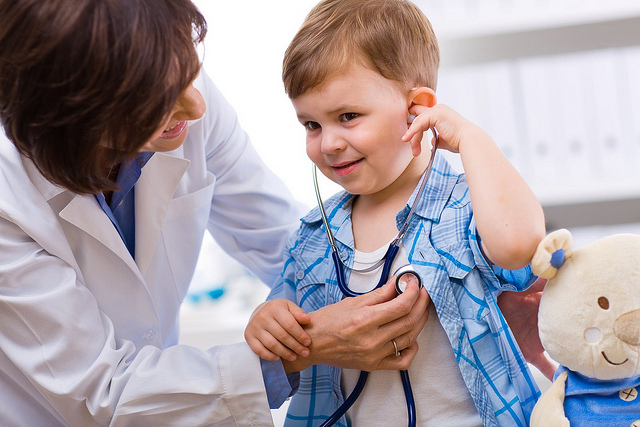The very first thing that you notice when there’s a slight rise in temperature on the child’s forehead. Then the suspicion of a fever starts to grow in your mind. You will then try to confirm the fever by touching the neck, hands, and the torso of your child. But how much? You’ll need a thermometer for measuring the temperature and once you confirm the severity of fever, you can do the simple measures which can be done at home to reduce fever is not just confined to giving the child fever-reducing medications like Acetaminophen (Paracetamol), there are other important steps to follow when taking care of a child with a fever. In this article, we will be discussing the most common ailment in the world, FEVER. And since it is difficult to manage fever in children when compared to adults, let us focus more on the home care management of fever in children.
Understanding Fever
- Fever is a symptom and not a disease.
- Commonest fevers are Viral fevers which do not require multiple medications or various tests. Most viral fevers take 3 to 5 days to recover.
- The normal body temperature is 37°C or 98.6°F
- Thermometers are used to determine the body temperature of the child. There are several types of thermometers available in the market which can be easily used by anyone at home. It can also be used to monitor the temperature by keeping charts if required. Ideally, it is advised to keep the temperature below 102 degrees of Fahrenheit or 38.9 degree Celsius. I will be writing more on how to use thermometers and will add the link here. UPDATE: Read this article to learn about Thermometers.
- Fever management mentioned in this article should be used only after the consulting with your doctor and commencing the treatment for the cause of the fever. Trying to suppress fever by overdoing the steps mentioned in this article, without consulting a doctor is not advisable.
- There are three main approaches to fever management at home and they are temperature control, giving proper supportive care and monitoring for serious life-threatening illness.
Steps to Reduce the Temperature
- Make the child comfortable by removing tight clothes, caps etc. It is usually better to dress the child in a single layer of soft cloth and a light blanket (if required)
- Keep the child in a well-ventilated room
- Give medications like Acetaminophen, Ibuprofen, which are available in India for over the counter use. It would be wise to consult your doctor if you are not sure about the dosage of the medications. Do keep in mind to follow the doctor’s prescription strictly and not to stop the medications once the fever comes down. Decreasing the frequency of medications is also not advisable. This is one of the main mistakes made by mothers who are afraid of overdosage.
- Continue the medications for 24 hours after the complete disappearance of fever
- Tepid Sponging: Using a sponge or wash-cloth to wet the skin of the child with warm water all over the body is very helpful in reducing the temperature. It works by promoting heat loss through evaporation from the skin surface and not by localized cooling. There is no use in placing wet clothes over the forehead as the cloth prevents evaporation.
Supportive Care
- A steady intake of warm oral fluids like salted rice soup, lime juice, tender coconut water. Avoid Coffee and Tea and even simple water as these fluids do not contain the essential electrolytes and glucose which are necessary to prevent dehydration.
- Continuous intake of small frequent portions of warm well cooked and soft nutritious food and locally available fruits.
- Rest till the symptoms disappear completely.
When to report to a Hospital?
The onset of unusual symptoms like rash, convulsions, bleeding from any part of the body, jaundice, reduced quantity of urine, breathing difficulty, and change in behavior. These are some of the life-threatening illnesses which can occur in association with high fever. These symptoms/conditions should be carefully monitored for at home and time should not be wasted in taking the child with these symptoms to the Emergency Department of a nearby hospital.
Do’s In Managing Fever
- Covering the nose and mouth while coughing or sneezing.
- Washing hands often with soap and water.
- Consult a doctor in case of high-grade fever before starting self-treatment.
- Give proper medications at the appropriate frequency as prescribed by the doctor.
- Do tepid sponging of arms, legs, and torso of the child with warm water.
- Encourage the child to drink more fluids.
Do NOT
- Restrict food or fluids
- Wrap up the child in multiple layers of clothing or use thick blankets, caps etc.
- Engage in activities which need physical exertion
- Self-medication as it is dangerous
- Compel doctors to give Injections or Intravenous drips for fever as they can lead to unwanted side effects like shivering, pain, dizziness or dangerous allergic reactions.
- Try to suppress fever without knowing it’s actual cause. Let the doctor decide the cause of the fever. Your doctor will prescribe medicines for treating the cause of a fever. Steps mentioned in this article are to be implemented together with proper medications.

